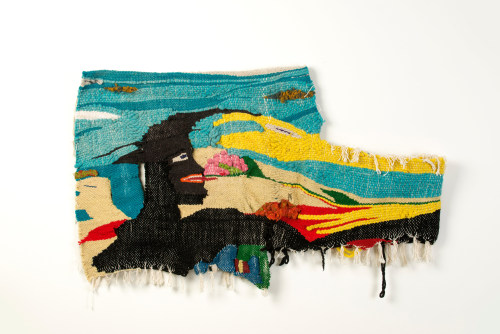
Joyce J. Scott, Face, ca. 1970's, wool, 24 x 40 inches, (61 x 101.6 cm)
Art Basel Miami Beach: art glitz
By Patryk P. Tomaszewski
December 7, 2018
In 1970, three Swiss dealers - Ernst Beyeler, Trudl Bruckner and Balz Hilt - organized the international art fair in Basel for the first time. Sixteen thousand people who visited the first edition of Art Basel had a chance to admire the works presented by 90 galleries from ten countries. Almost 50 years have passed since that moment, and Art Basel has evolved into the position of a global brand and the most important (next to Frieze Art Fair) player on the global market of modern and contemporary art. In the last two decades, Miami and Hong Kong joined the fair in Basel, and in 2015 all three editions of the exhibitions saw almost 250,000. visitors.
The most prestigious remains the June edition of the exhibition in Switzerland (the same process of admitting the gallery applying for participation is reportedly the most rigorous), although both Miami and Hong Kong have a strong strategic significance for the fair. It is easier to reach galleries and collectors from Asia and Australia to Hong Kong, and to Florida - those from North and South America. The number of satellite fairs, a trade fair that uses the position of the Swiss giant to lure customers with less-than-rich wallets, is also awe-inspiring in Miami . There were eight of them this year.
The focal point of the December events at the Miami Beach is the Art Basel exhibition hall, located every year in the intimidating Convention Center building. The extraordinary size and industrial character of this place distinguishes it from the Frieze fair in New York organized on the charming island of Randalls, or ADAA held in the historic Park Avenue Armory. However, the size of the Convention Center allows you to focus the exhibition of over 200 international galleries. Such an astounding number of exhibitors in theory also allows, as the organizers emphasized, to expand the canon of art history. Those who follow the academic development of this field, this procedure should not be surprised, because attempts to break up the linear chronology resulting from the fact that art is thought from a European perspective,
However, in the case of Art Basel Miami Beach, these efforts were, in my opinion, slightly eclipsed by the canonical works of Western artists presented at the strategically placed positions of the American gallant galleries. Gagosian Gallery, for example, showed the oil painting of Pablo Picasso from the 1960s opposite the works of Andy Warhol and next to the great red sculpture by Jeff Koons. Nevertheless, many galleries distinguished themselves in this year's determination to break the historical standards. It is worth noting the efforts of galleries representing artists from Latin America and those that focused on the work of artists of Afro-American origin. One of my favorites was the exhibition of Peter Blum Gallery devoted entirely to the American artist Joyce Scott, whose meticulously made sculptures and carefully woven small tapestries explicitly refer to the painful history of black Americans. Joyce's works acquire an additional social overtone in the marked by the racial era of Donald Trump.